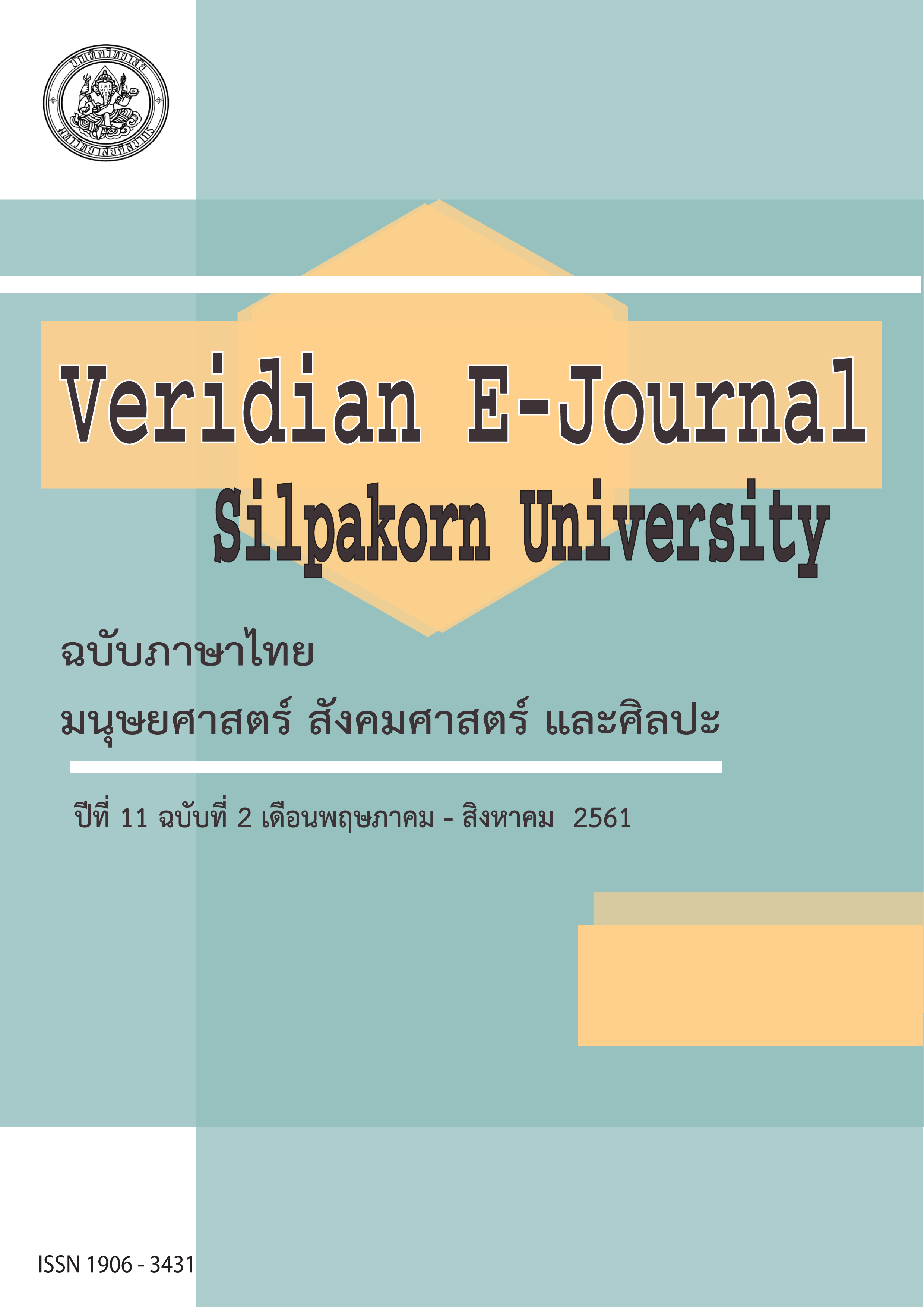การอนุรักษ์และพัฒนาภูมิปัญญาการละเล่นพื้นบ้านของเด็กไทยภาคใต้ (Conservation and Development of the Thai Children’s Folk Play Wisdoms in the South)
Main Article Content
Abstract
การวิจัยนี้มีวัตถุประสงค์เพื่อ 1.ศึกษาปัจจัยที่ส่งผลต่อการอนุรักษ์ภูมิปัญญาการละเล่นพื้นบ้านของเด็กไทยภาคใต้ 2. ศึกษาแนวทางการอนุรักษ์และพัฒนาภูมิปัญญาการละเล่นพื้นบ้านของเด็กไทยให้คงอยู่และ
- ศึกษาคุณค่าของการละเล่นพื้นบ้านของเด็กไทยที่มีผลต่อพัฒนาการด้านร่างกาย อารมณ์-จิตใจ สังคม และสติปัญญาของเด็ก เป็นการวิจัยเชิงปฏิบัติการ โดยใช้วิธีการศึกษา 4 วิธี คือ 1) การวิจัยเชิงสำรวจ จากโรงเรียนกลุ่มตัวอย่างในภาคใต้ จำนวน 400 โรงเรียน 2) การวิจัยเชิงคุณภาพ โดยสัมภาษณ์ผู้อำนวยการโรงเรียน 10 คน ครูผู้สอน 40 คน ผู้นำท้องถิ่นและปราชญ์ชาวบ้าน 40 คน 3) การวิจัยกึ่งทดลอง ด้วยเทคนิคการสังเกตพฤติกรรม และ 4) การวิจัยเชิงทดลอง จากนักเรียนกลุ่มตัวอย่างที่เข้าร่วมกิจกรรม 400 คน เครื่องมือที่ใช้ในการวิจัยประกอบด้วย 1) แบบสำรวจการละเล่นพื้นบ้านของเด็กไทยภาคใต้ 2) แบบสัมภาษณ์ความคิดเห็นต่อปัจจัยและอุปสรรคของการอนุรักษ์ภูมิปัญญาการละเล่นพื้นบ้านของเด็กไทยภาคใต้ 3) แบบสัมภาษณ์ความคิดเห็นเกี่ยวกับการละเล่นพื้นบ้านของเด็กไทยภาคใต้ 4) คู่มือการละเล่นพื้นบ้านของเด็กไทยภาคใต้ 5) แบบประเมินการละเล่นพื้นบ้านของเด็กไทยภาคใต้ และ 6) แบบบันทึกการดำเนินกิจกรรมการละเล่นพื้นบ้านของเด็กไทยภาคใต้ วิเคราะห์ข้อมูลด้วยสถิติพรรณนา ความถี่ และค่าเฉลี่ย
ผลการวิจัยพบว่า 1) ปัจจัยที่ส่งผลต่อการอนุรักษ์ภูมิปัญญาการละเล่นพื้นบ้านของเด็กไทยภาคใต้ ได้แก่ นโยบายการศึกษา ครูผู้สอน ปราชญ์ชาวบ้าน บุคคลภายในครอบครัว เศรษฐกิจ และเทคโนโลยี 2) แนวทาง การอนุรักษ์และพัฒนาภูมิปัญญาการละเล่นพื้นบ้านของเด็กไทยภาคใต้ให้คงอยู่ ต้องเริ่มจากนโยบายของสถานศึกษา ชุมชน และหน่วยงานที่รับผิดชอบ ร่วมส่งเสริมสนับสนุนกิจกรรม จัดหาแหล่งเรียนรู้ ปรับเปลี่ยนอุปกรณ์และวิธีการเล่นให้สอดคล้องกับสภาพแวดล้อมและวิถีการดำเนินชีวิตในแต่ละท้องถิ่น และ 3) การละเล่นพื้นบ้านของเด็กภาคใต้มีผลดีต่อการพัฒนาเด็กทั้ง 4 ด้าน ภาพรวมอยู่ในระดับมากที่สุด เมื่อพิจารณาเป็นรายด้าน พบว่า ทุกด้านอยู่ในระดับมากที่สุด( = 2.79) เรียงตามลำดับ คือ ด้านร่างกาย ( = 2.87) ด้านอารมณ์-จิตใจ ( = 2.85) ด้านสติปัญญา ( = 2.74) และด้านสังคม ( = 2.70)
The objectives of this research were; 1) To study the factors affecting the conservation of the Thai children’s folk play wisdom in the south. 2) To find ways to sustain these folk plays wisdom, and 3) To study the values of these folk plays toward the children’s cognitive, emotional, social and physical development.
This research is a practical research, used 4 methods as follows; 1) Survey research, the sampling of schools in the south 400 schools; 2) Qualitative research, the interview for 10 school administrators, 40 teachers and 40 community leaders and local sages; 3) Semi-experimental research by using behavioral observation, and 4) Experimental research, 400 students that attended the activities. Research tools include; 1) Survey of the Thai Children’s folk play in the south, 2) Interview for factors and obstacles, conservation of the Thai Children’s folk play wisdoms in the south, 3) Interview on the Thai Children’s folk play in the south, 4) Manual of the Thai Children’s folk play in the south, 5) Evaluation of the Thai Children’s folk play in the south, and 6) Activity record of the Thai Children’s folk play in the south, data analysis by descriptive statistics, frequency and mean
The results shown that; 1) Factors affecting to be conservation of the Thai children’s folk play wisdoms in the south consist of education, policy, teacher, philosopher, family, economy and technology. 2) Guidelines to be conservation and development of the Thai children’s folk play wisdoms in the south should begin by policy of the education community and the authorities, promotion and providing modified learning resources. Modify equipment and play methods in accordance with the local environment and lifestyle. 3) The Thai children’s folk play wisdoms in the south have positive effects on the development of children in all four aspects and the highest level. Considering each aspect, it was found that all aspects were at the highest level ( X = 2.79), physical ( = 2.87), emotional ( = 2.85), cognitive ( = 2.74) and social ( = 2.70) respectively.

